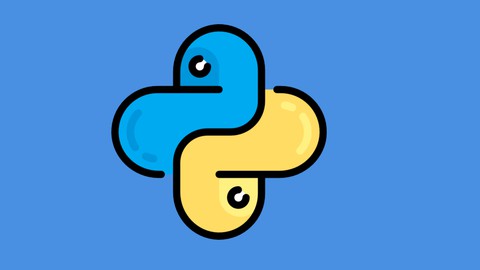
Python Programming for Beginners : Learn Python Quickly
Python Programming for Beginners : Learn Python Quickly, available at $49.99, has an average rating of 4.4, with 163 lectures, based on 23 reviews, and has 1099 subscribers.
You will learn about Python Development Environment Setup The command Line Interface Interacting with Python Python Expressions and Statements Python Variables and Operators Python Data Types and Data Structures Python Control Flow and Python Functions Python Modules and Packages Working with External Files in Python Working with Dates Times and Calendars in Python Working with Images in Python Working with CSV and PDF in Python Handling Errors and Exceptions Create various real world Python Projects This course is ideal for individuals who are Beginner Python Developers or Beginner Python Programmers or Beginners to Programming It is particularly useful for Beginner Python Developers or Beginner Python Programmers or Beginners to Programming.
Enroll now: Python Programming for Beginners : Learn Python Quickly
Summary
Title: Python Programming for Beginners : Learn Python Quickly
Price: $49.99
Average Rating: 4.4
Number of Lectures: 163
Number of Published Lectures: 163
Number of Curriculum Items: 163
Number of Published Curriculum Objects: 163
Original Price: $39.99
Quality Status: approved
Status: Live
What You Will Learn
- Python Development Environment Setup
- The command Line Interface
- Interacting with Python
- Python Expressions and Statements
- Python Variables and Operators
- Python Data Types and Data Structures
- Python Control Flow and Python Functions
- Python Modules and Packages
- Working with External Files in Python
- Working with Dates Times and Calendars in Python
- Working with Images in Python
- Working with CSV and PDF in Python
- Handling Errors and Exceptions
- Create various real world Python Projects
Who Should Attend
- Beginner Python Developers
- Beginner Python Programmers
- Beginners to Programming
Target Audiences
- Beginner Python Developers
- Beginner Python Programmers
- Beginners to Programming
Python is a dynamic modern object-oriented programming language and can be used to do a lot of things both big and small. Python is what is referred to as a high level language. That means it is a language that is closer to humans than computer. It is also known as a general purpose programming language due to it’s flexibility. Python is an interpreted language that does not need to be complied like for example java programming language. It is interpreted and run on the fly the same time.
What can Python do?
Python can be used on a server to create web applications.
Python can be used alongside software to create workflows.
Python can connect to database systems. It can also read and modify files.
Python can be used to handle big data and perform complex mathematics.
Python can be used for rapid prototyping, or for production-ready software development.
Why Python?
-
Python works on different platforms (Windows, Mac, Linux, Raspberry Pi, etc).
-
Python has a simple syntax similar to the English language.
-
Python has syntax that allows developers to write programs with fewer lines than some other programming languages.
-
Python runs on an interpreter system, meaning that code can be executed as soon as it is written. This means that prototyping can be very quick.
-
Python can be treated in a procedural way, an object-oriented way or a functional
-
Python has been used in a lot of places like in creating games, for statistical data and visualization,speech and face recognition.
-
Some of the biggest websites on this planet earth use python in one way or another. Examples include:
-
Google
-
YouTube
-
Facebook
-
NASA
-
Disney
-
Reddit
-
Instagram
-
Survey Monkey
-
Yahoo Maps
Topics covered include:
Interacting with Python in various ways
Python Operators
Python Data Types
Data type casting
Python String Methods and Formatting
Python Data Structures
Python Functions
Python Control Flow Statements
Python Modules and Packages
Working with external files in Python
Working with dates and times
Working with calendars
Handling exception errors
Projects we will create:
-
Lottery Number Simulator
-
Encryption program
-
Random Password Generator
-
Create a digital clock
-
Create a number guessing game
-
Create a random number generator
-
Create a countdown timer
-
Create a lottery number simulator
-
Screen break program
Course Curriculum
Chapter 1: Introduction
Lecture 1: Overview of Programming in Python
Lecture 2: Course Introduction
Lecture 3: What is Python
Lecture 4: High and low level programming languages
Lecture 5: Compilers and interpreters
Chapter 2: The Command Line Interface
Lecture 1: What is the command line interface
Lecture 2: How to open the command line interface
Lecture 3: The prompt
Lecture 4: How to display username of current user
Lecture 5: How to display computer name
Lecture 6: How to display current working directory
Lecture 7: How to list files in directories
Lecture 8: How to change directory
Lecture 9: How to create a new directory
Lecture 10: How to create a new file
Lecture 11: How to copy files
Lecture 12: How to move files
Lecture 13: How to delete files and directories
Chapter 3: Python Installation and Setup
Lecture 1: Python Installation – Windows
Lecture 2: Python3 Installation – Macs
Lecture 3: Python3 Installation – Linux
Lecture 4: PyCharm Installation – Windows
Lecture 5: PyCharm Configuration for Windows – Part 1
Lecture 6: PyCharm Configuration for Windows – Part 2
Lecture 7: Changing Themes in PyCharm
Lecture 8: PyCharm Installation – Macs
Lecture 9: PyCharm Configuration for Macs
Lecture 10: What are Text Editors
Lecture 11: Installing Atom Text Editor
Lecture 12: Installing Visual Studio Code Text Editor
Lecture 13: Installing SublimeText
Chapter 4: Interacting with Python
Lecture 1: Interaction with Python : Part 1
Lecture 2: Interaction with Python : Part 2
Lecture 3: Python Expressions
Lecture 4: Python Statements
Lecture 5: Python Code Comments
Lecture 6: Python Indentations
Lecture 7: Python Variables
Lecture 8: Capturing User Inputs
Lecture 9: Algorithms
Chapter 5: Python Operators
Lecture 1: What are Python Operators
Lecture 2: Python Arithmetic Operators
Lecture 3: Python Assignment Operators
Lecture 4: Python Comparison Operators
Lecture 5: Python Logical Operators
Lecture 6: Python Identity Operators
Lecture 7: Python Membership Operators
Lecture 8: Binary Numbers
Lecture 9: Python Bitwise Operators: Part 1
Lecture 10: Python Bitwise Operators: Part 2
Lecture 11: Python Operator Precedence
Chapter 6: Python Data Types
Lecture 1: Number Data Type
Lecture 2: String Data Type
Lecture 3: Boolean Data Type
Lecture 4: Casting Data Types
Chapter 7: Python Data Stuctures
Lecture 1: What are data structures
Lecture 2: Python List
Lecture 3: Creating a Python List
Lecture 4: Accessing elements in a Python List
Lecture 5: Python List Methods: Part 1
Lecture 6: Python List Methods: Part 2
Lecture 7: Python Tuple : Part 1
Lecture 8: Python Tuple : Part 2
Lecture 9: Python SET
Lecture 10: Python SET Methods
Lecture 11: Python Dictionary
Lecture 12: Python Dictionary Methods
Lecture 13: Create a directory for Python files
Chapter 8: Python Control Flow
Lecture 1: What is Control Flow
Lecture 2: if statements
Lecture 3: else statements
Lecture 4: elif statements
Lecture 5: while loops
Lecture 6: for loops
Lecture 7: nested for loops
Lecture 8: break statement
Lecture 9: continue statement
Lecture 10: for loop and break statement
Lecture 11: for loop and continue statement
Lecture 12: for loop and else statement
Lecture 13: for loop and range statement
Chapter 9: Python Functions
Lecture 1: What are Python Functions
Lecture 2: Python return keyword
Lecture 3: Default Parameter value
Lecture 4: Keyword argument
Lecture 5: Functions returning other functions
Lecture 6: Assigning Functions to Variables
Lecture 7: Global and Local Variable Scopes
Lecture 8: Nesting Functions
Lecture 9: Nesting functions accessing variable scope
Lecture 10: Function Pass keyword
Instructors
-
Bluelime Learning Solutions
Making Learning Simple
Rating Distribution
- 1 stars: 0 votes
- 2 stars: 0 votes
- 3 stars: 2 votes
- 4 stars: 10 votes
- 5 stars: 11 votes
Frequently Asked Questions
How long do I have access to the course materials?
You can view and review the lecture materials indefinitely, like an on-demand channel.
Can I take my courses with me wherever I go?
Definitely! If you have an internet connection, courses on Udemy are available on any device at any time. If you don’t have an internet connection, some instructors also let their students download course lectures. That’s up to the instructor though, so make sure you get on their good side!
You may also like
- Best Investing Courses to Learn in March 2025
- Best Personal Finance Courses to Learn in March 2025
- Best Health And Wellness Courses to Learn in March 2025
- Best Chatgpt And Ai Tools Courses to Learn in March 2025
- Best Virtual Reality Courses to Learn in March 2025
- Best Augmented Reality Courses to Learn in March 2025
- Best Blockchain Development Courses to Learn in March 2025
- Best Unity Game Development Courses to Learn in March 2025
- Best Artificial Intelligence Courses to Learn in March 2025
- Best Flutter Development Courses to Learn in March 2025
- Best Docker Kubernetes Courses to Learn in March 2025
- Best Business Analytics Courses to Learn in March 2025
- Best Excel Vba Courses to Learn in March 2025
- Best Devops Courses to Learn in March 2025
- Best Angular Courses to Learn in March 2025
- Best Node Js Development Courses to Learn in March 2025
- Best React Js Courses to Learn in March 2025
- Best Cyber Security Courses to Learn in March 2025
- Best Machine Learning Courses to Learn in March 2025
- Best Ethical Hacking Courses to Learn in March 2025






















